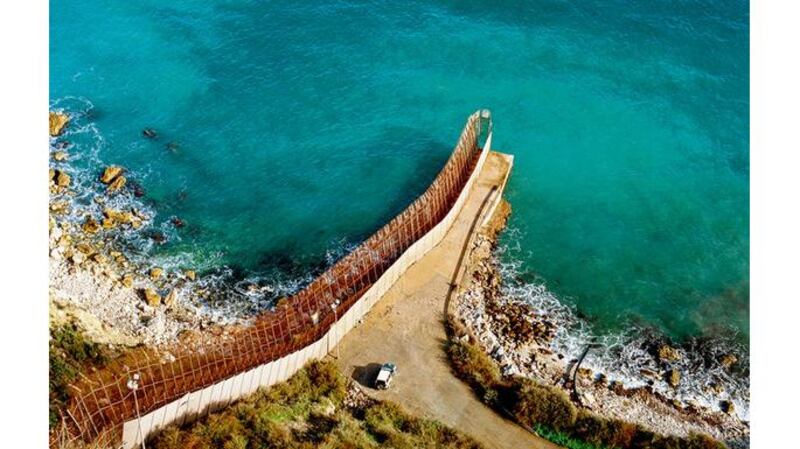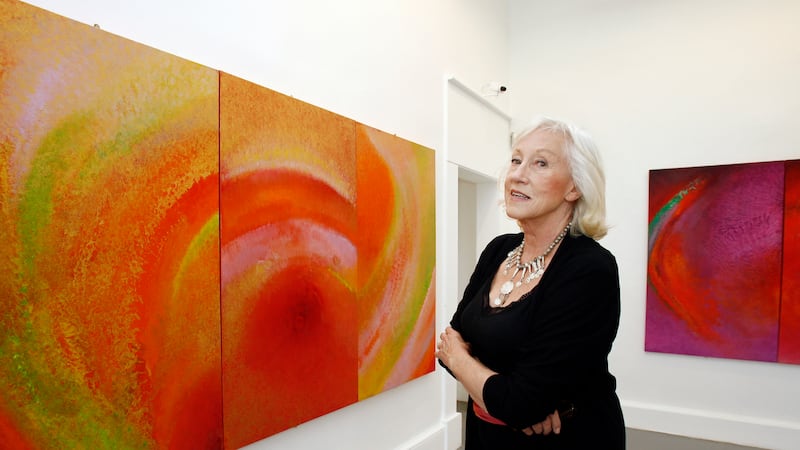Anthony Haughey's exhibition 'Citizen' explores cross-cultural relationships in 'spaces of exception' where refugees and migrants live in suspended animation, writes AIDAN DUNNE
From the sound of it, Anthony Haughey’s first exhibition, Home, could be the opposite of his latest, Citizen, at Drogheda’s Highlanes arts centre, which is about people forced to leave their countries of origin and deal with the protracted difficulties of relocation, including relocation in Ireland.
Home, completed in 1992, documented life in the Ballymun tower blocks but, as Haughey observed, things were not as simple as the reassuring title implied. From the top of the blocks of flats, the runway at Dublin Airport was visible, and there was the unmistakable sense that the children were being raised for emigration, that their future was not in Ireland.


Jump forward 20 years and things are both different and the same. Citizen looks to two primary locations. One is the asylum seekers’ reception centre in the erstwhile Butlins holiday camp at Mosney, near Drogheda, Co Louth. The other is the forested area outside the north African Spanish enclaves of Ceuta and Melilla.
Here, migrants from sub-Saharan Africa live as they try to gain entry to the Spanish sector, which is bounded by a double, six-metre-high razor-wire fence. Such anomalous living spaces, temporary refuges, are replicated on the peripheries of European cities in derelict buildings and camps, Haughey says. He quotes Giorgio Agamben who has designated them “spaces of exception”, apart from their nominal states, where normal civil rights are suspended.
Home consisted of a series of photographs. The work that makes up Citizen includes photographs but also installation, text, and video: in fact, much of it is a documentation of encounters and actions involving others. Haughey sees it all as collaborative. “My whole approach is based on collaborating with artists and non-artists. It’s very much within the framework of relational and dialogic aesthetics” – ie, the substance of the art happens in the personal and social interactions involved, and often in public social spaces rather than art galleries.
Born in Co Armagh in 1963, Haughey studied at the West Surrey Institute of Art and Design and then NCAD in Dublin. More recently, he completed a practice-based PhD during a research fellowship at the Interface Centre at the University of Ulster. He lectures in DIT’s School of Media, where he’s taught since 1998. Organisation, mediation, and curation have become increasingly central to his practice.
From the mid-1990s he’s lived in the Dundalk region: “The south Armagh Border is two miles to the north.” Appropriately enough, Citizen is a joint undertaking by Highlanes and, north of the Border, the Millennium Court Arts Centre in Portadown. The reality of the Border has helped to shape his interest in contested spaces, sites of “unresolved antagonisms”, and migrant narratives. One long-term project, Disputed Territory, is an exploration of terrain in the aftermath of conflict, including the Border region in Ireland, and Kosovo and Bosnia in the former Yugoslavia.
One thing that comes across in Disputed Territory is his appalled but determinedly cool-headed reaction to events that are truly terrible, including the massacre of many thousands of Muslim men and boys at Srebrenica in 1995.
Rather than being a reportage photographer, looking for “the decisive moment”, he is an aftermath photographer, looking at the way evidence of conflict is inscribed in the environment and the landscape, in ways that are not immediately or dramatically visible. He sets out to encourage patient looking rather than instant apprehension.
Relational aesthetics
It seems fair to suggest that his emotional reaction to the effects of conflict has fuelled the drive towards relational aesthetics in his practice; towards, that is, direct engagement with individuals and groups. Rather than depicting things as a detached observer, he has become an interested, involved witness. Archival materials, documents of various kinds, and the recorded testimony of individuals have all become part and parcel of his work, as have performative art interventions involving others.
Underlying this approach is the conviction that art is not necessarily just a cultural commodity but potentially a form of cultural production that can effect real change in the world.
“I often tend to work in that area where the art world meets the public world. It’s not about victimhood,” he is quick to note. “It is about cross-cultural relationships. I’m not claiming to speak for anyone else. That’s why it’s important that it emerges from dialogue: it’s shared, it’s collaborative, in how it is made and how it is encountered. Ideally, one would like to encourage someone who comes to see it to reflect on their own position.”
He’s clearly delighted that Indian curator Latika Gupta, working with the British Council art collection, has included some of his Home photographs in her exhibition Homelands, currently showing in New Delhi (he will travel to India soon to participate in events related to the show).
Gupta looked for art that “grapples with the relationship between self and place in a world of transitory identities and contested geographies”, an outline that might have been written with his work in mind. She includes an interview with Haughey in the catalogue. “What particularly pleased me was that she immediately picked up on what I was trying to do.”
Haughey was, as he puts it, “unofficial artist in residence” over a period of several years at Mosney, making photographs, video recordings and organising art interventions. The constantly shifting demographic of the centre, he suggests, makes it “a microcosm of global instability”. He got to know people over long periods and many have become collaborators in several projects.
“I’ve found it fascinating. I thought it was very exciting, when immigrants from so many different cultural backgrounds began to appear in Ireland. As a country with such a strong diasporic history, I’d hope we could bring that experience to bear.”
Despite the dominance of social engagement in his practice, technical and aesthetic qualities remain high priorities, as even a cursory glance at Citizens will confirm. Progress II, for example, a video installation made with Susanne Bosch and Kevin Duffy in 2008, centres on a dinner-table conversation involving 11 people from nine different countries who had recently migrated to Ireland, North and South.
“It was important that it was well made, that it had high aesthetic values. We wanted to set it up and light it like a Renaissance painting,” he says.
Centenary of 1913 Lockout
He’s curated a film strand in Limerick City Gallery’s current Strike! programme, the beginning of a series of events marking the centenary of the 1913 Lockout, initiated by gallery director Helen Carey. Still to come are projects that look to much more recent industrial travails, including Waterford Crystal, the Vita Cortex sit-in and the problems faced by the Lagan brick makers. “When we started thinking about the Lockout we were looking at it in a historical way, but very quickly it became clear that the issues are all around us today.”
Citizen is at the Highlanes Gallery, Laurence Street, Drogheda, Co Louth until April 6th












